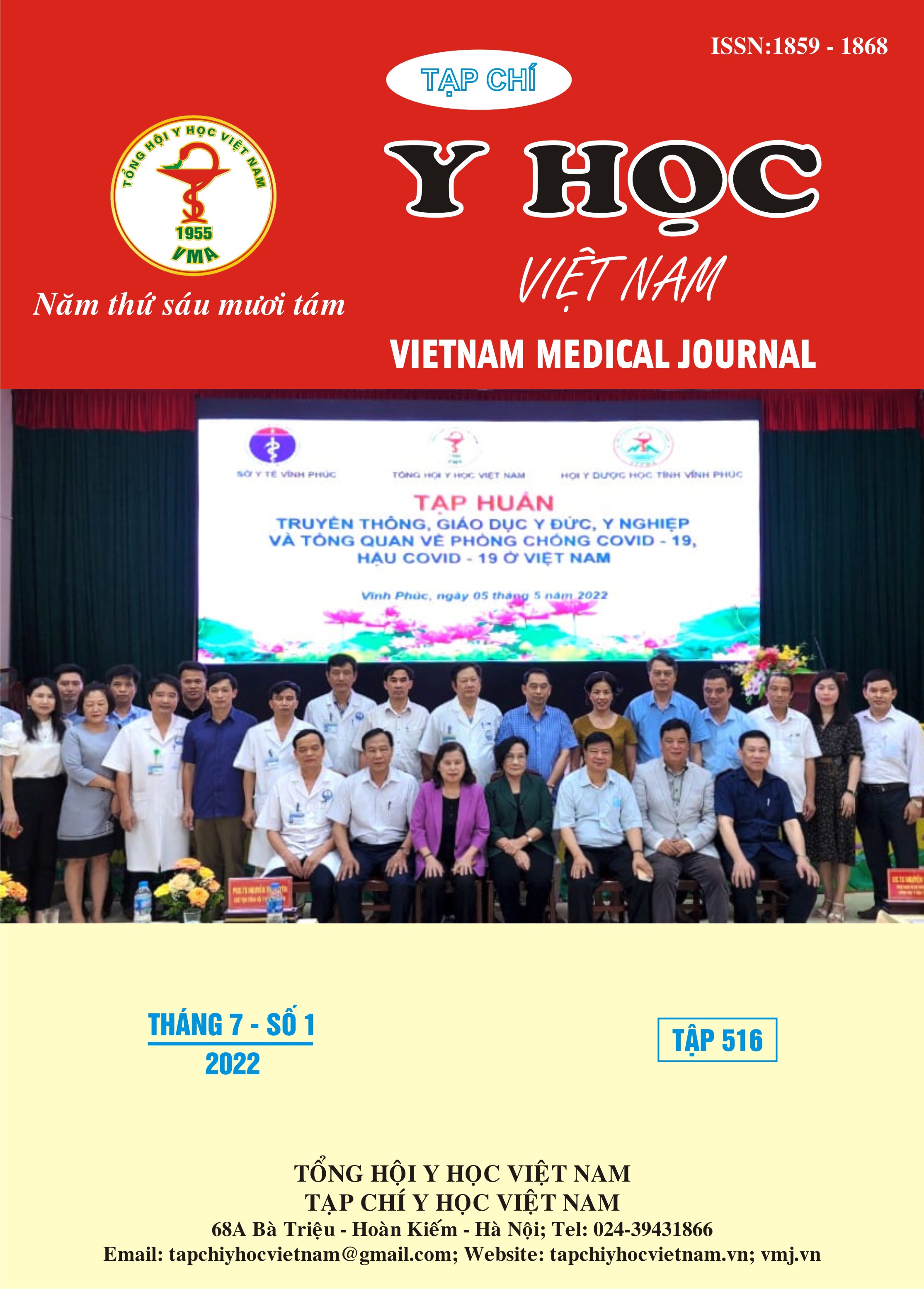ASSESSMENT OF SOME COMPLICATIONS OF THE 33°C TARGETED HYPOTHERMIA TREATMENT IN THE TREATMENT OF COMA PATIENTS AFTER CARDIAC ARREST
Main Article Content
Abstract
Purposes: To evaluate some complications of the method of conducting hypothermia with a target of 33°C in the treatment of comatose patients after out-of-hospital cardiac arrest. Subjects and methods: Interventional study on 68 comatose patients after out-of-hospital cardiac arrest who were successfully resuscitated and return of spontaneous circulation with target hypothermia of 33°C in the emergency department A9 Patient Bach Mai Hospital from October 2015 to January 2020. Results: Shivering was a complication encountered in 100% of patients in the hypothermic phase. Hypokalemia in the hypothermic phase (KT0 3,7 ± 0,8 vs KT351 3,5 ± 0,7; p = 0,011), hyperkalemia during the warming phase (KT2 3,8 ± 0,7 vs KT352 4,2 ± 0,8; p = 0,007). 72,1% of patients had hyperglycaemia, increasing trend during hypothermia. Thrombocytopenia is a common complication (TC T0 287,7 ± 72,2 compared with TC T4 163,1 ± 61,1; p < 0,001). Sinus bradycardia was found in 10.3% of patients. Conclusions: Shivering, disorder kalemia, hyperglycemia, and thrombocytopenia are common complications in the treatment of 33°C target hypothermia. In the treatment of hypothermia with a target of 33°C, close monitoring, detection and management of these complications are essential..
Article Details
Keywords
Cardiac arrest, Sudden cardiac death, Cardiopulmonary resuscitation (CPR), Therapeutic hypothermia, Complications
References
2. Bernard S. A., Gray T. W., Buist M. D. và cộng sự (2002). Treatment of comatose survivors of out-of-hospital cardiac arrest with induced hypothermia. N Engl J Med, 346 (8), 557-563.
3. Callaway C. W., Donnino M. W., Fink E. L. và cộng sự (2015). Part 8: Post-Cardiac Arrest Care: 2015 American Heart Association Guidelines Update for Cardiopulmonary Resuscitation and Emergency Cardiovascular Care. Circulation, 132 (18 Suppl 2), S465-482.
4. Choi H. A., Ko S. B., Presciutti M. và cộng sự (2011). Prevention of shivering during therapeutic temperature modulation: the Columbia anti-shivering protocol. Neurocrit Care, 14 (3), 389-394.
5. Haase K. K., Grelle J. L., Khasawneh F. A. và cộng sự (2017). Variability in Glycemic Control with Temperature Transitions during Therapeutic Hypothermia. Crit Care Res Pract, 2017, 4831480
6. Hypothermia after Cardiac Arrest Study G. (2002). Mild therapeutic hypothermia to improve the neurologic outcome after cardiac arrest. N Engl J Med, 346 (8), 549-556.
7. Mirzoyev S. A., McLeod C. J., Bunch T. J. và cộng sự (2010). Hypokalemia during the cooling phase of therapeutic hypothermia and its impact on arrhythmogenesis. Resuscitation, 81 (12), 1632-1636
8. Wang C. H., Chen N. C., Tsai M. S. và cộng sự (2015). Therapeutic Hypothermia and the Risk of Hemorrhage: A Systematic Review and Meta-Analysis of Randomized Controlled Trials. Medicine (Baltimore), 94 (47), e2152.


